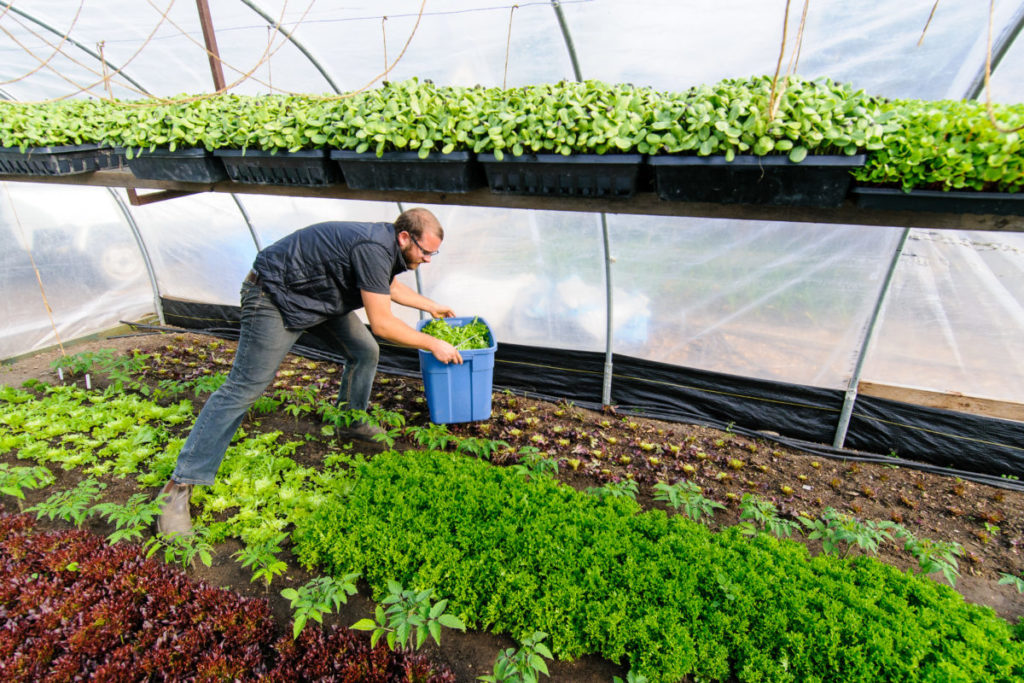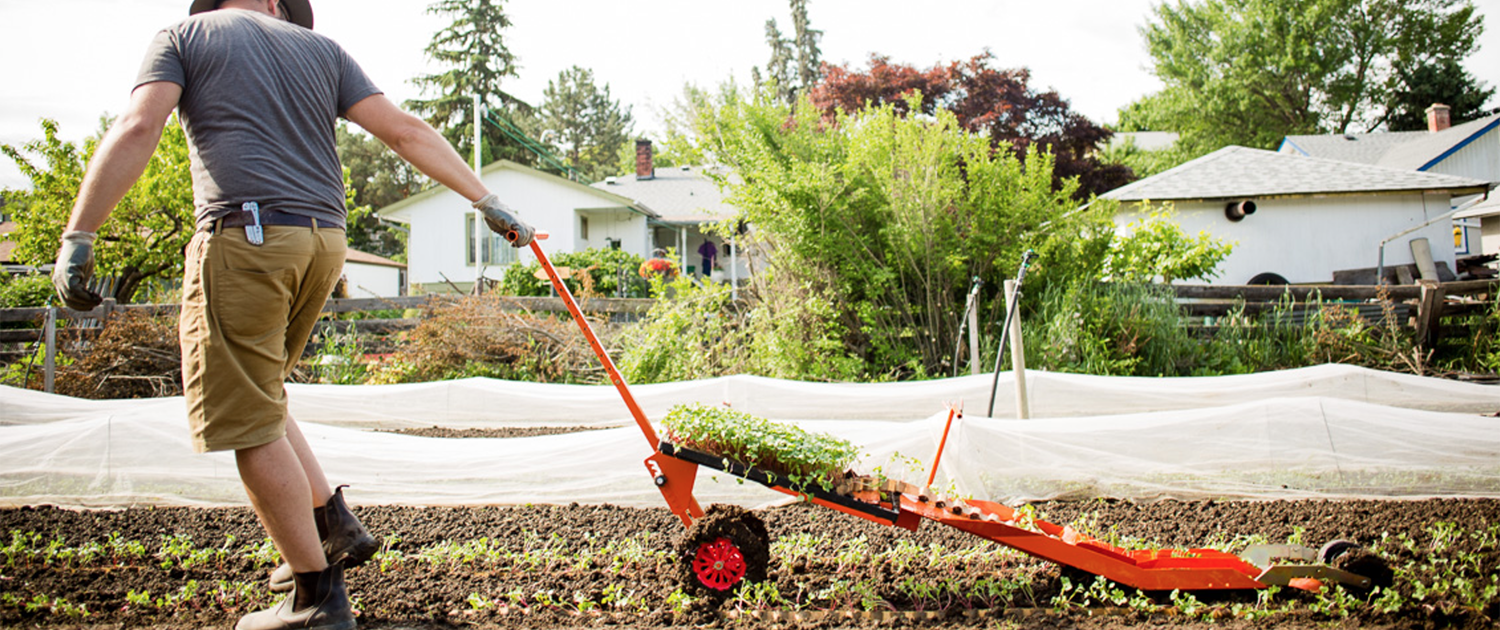News
100 000 dollars on 1000 sqm – Meet pioneering urban farmer Curtis Stone

Profitable urban farming on leased and borrowed land… Sounds almost too good to be true. In this week’s tutorial, we will introduce you to Curtis Stone – The Urban Farmer. On just about 1000 square meters he is able to make an income of about 100 000 US-dollars, equivalent to 0,8 million Swedish kronor – and he doesn’t even own the land he farms on in most cases. Learn the basics of his principles to profitable urban farming in this article.
Profitable farming on very small spaces
Curtis Stone has been a commercial urban farmer for the past 10 years in Canada (Kelowna, BC) and through a method of small plot intensive (SPIN) farming, he is one of the greatest pioneers in showing how sustainable urban farming can be profitable. Curtis has a total farmable land divided into many smaller plots of about 1/4 acre, 1000 square meters, and he is able to make an income of about 100 000 US-dollars on this land, equivalent to 800 000 Swedish kronor per year. Enough to support two full-time employees during the 8-months season and part-time salaries during winter. This is a radically higher profit per square meter compared to most conventional farming – and yet it is all based on organic or beyond organic techniques. In this article, we will tell you some of his methods to running a successful commercial urban farm profitably.
Five things that make Curtis’s farm so profitable
So how does he make his farm so profitable? Here come 5 things that make Curtis’s farm so profitable. Inspired by SPIN farming (Small Plot Intensive Farming) and the Market Gardening methods set forth by pioneers as Eliot Coleman and Jean Martin Fortier – Curtis has set up his own style and method of really maximizing yield and profit per square foot or square meter. He calls the method ”High rotation planting”:
1. High rotation planting
This basically means each bed is rotated with 4 crops each season. On average, a 50 foot (15 meters) bed yields 1600 dollars of revenue. With around 63 of these 50 foot beds Curtis is able to generate around 100 000 USD of revenue. It can be scaled to any size, and the idea is that many small farmers like Curtis could add up to feed a good proportion of the city with local food.
2. Grow biointensively and add organic matter
Curtis and J.M. Fortier, as well as Eliot Coleman, grows according to the method of biointensive farming where you sow and plant much more densely than is usually recommended. This minimizes the area where weeds can grow and you get a much higher yield. In order to farm so intensively, the key is to build the soil fertility by adding loads of compost. Each season, Curtis begins applying approximately 2 inches (5cm) of compost per bed. And between every rotation of crops, a certain amount of compost is added to ensure that the plants always have the nutrition they need.
3. Market garden tools that save time
In the past 10 years, pioneers like Jean Martin Fortier has experimented with a wide array of hand tools and found ways to maximize the labour of market gardening with them. These tools are made for standardized 75cm beds and with these tools for seeding and harvesting hours of work is turned into minutes of work – and this has revolutionized the market garden movement. Curtis Stone uses many of these tools as a way to grow more with less work.
4. Profitable crops
The final secret to doing this, however, is to really focus on the most profitable crops. Curtis started out growing a range of 90 different crops but through really tracking his time spent and the results each year and how much profit each crop made he soon found the most profitable 10 crops and now focus solely on these today – saving him lots of work and bringing in more money on smaller areas of land.
So how do you know which crops are the most profitable? Curtis developed what he called the crop value rating system of choosing these most profitable crops based on 5 characteristics. Read more about them in our other Grow Academy article – How to Choose the Most Profitable Crops.
5. He doesn’t own the land he grows on!
By not having to invest in expensive farmland, Curtis Stone could start the farm on a minimum budget. Curtis leases and borrows land from private homeowners and usually rents the place in exchange for some of the weekly vegetables that he grows. He usually grows on peoples backyards and tries to get as big areas as possible or at around 100 sqm as a minimum per plot. For each growing season, he uses the land he usually gives the landowners a basket of veggies per week during the season. This would otherwise cost them about 20-30 dollars/week and the landowners also save money and time in not having to cut the lawn that is now a beautiful farm. Curtis also compensates for any of the extra water use that is above their normal water bill and pays this for them.
Want to make this happen in Gothenburg?
This is an example of a really good way to turn a costly lawn into a vegetable producing green oasis. And also a great example of a good agreement between owner and grower. If you like the idea – please spread the word about the GrowGbg matchmaking service to villa owners or private landowners in your area. Share it with your friends and neighbours and use our matchmaking service to find growing space near you! Perhaps you even have land and got really excited to share it with a grower to get some local food. Create a free account to share your garden space on the platform and then click “Add Land” and you’ll be guided in how put up your land to find a grower near you!
Want to learn more about Curtis methods of commercial urban farming?
Check out his website: theurbanfarmer.co where he also has an online course for Profitable urban farming. You can also follow him on youtube where he explains a lot about how his farming and business is working. If you want to meet him in person – he will come to Sweden this summer. First time ever he teaches in Europe! Check out the event on our event page.
Thanks for reading!
Please let us know if you have any questions or tips for future articles here at the Academy.
Best,
The GrowGBG team





